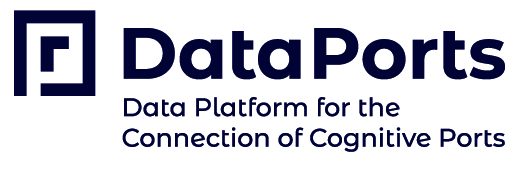The first survey is focused on the potential stakeholders in the shipping port’s ecosystem and aims to identify the market needs.
Through the annually conducted surveys, DataPorts aims to measure the success of the project impact on the Ports Ecosystem. They will also be a valuable source to measure the actual impact of the designed data platform at different implementation stages and, through this evaluation, give valuable insights in terms of data-platform’s functionality and its usage. The targeted responders may be businesses and individuals that are currently related to the seaport’s community but will make an effort to have responses from private and public bodies that potentially may benefit from their involvement with the shipping ports.
These surveys, explained in more detail in the following link, will take place in three different phases of the project and follow the requirements and the platform implementation stages. The targeted responders may be businesses and individuals that are currently related to the seaport’s community but will make an effort to have responses from private and public bodies that potentially may benefit from their involvement with the shipping ports.
Regarding the Survey #1, the scope of this questionnaire is to identify the needs of known or unknown (potential) stakeholders in the shipping port’s ecosystem. The responses will inform future proposals and allow us to create new datasets or AI-based cognitive services directly catered to the stakeholders’ needs. The survey was conducted between Oct. 1st and Nov. 6th and numerous participants were invited. The purpose was to collect responses from key players in seaports’ ecosystem and from various fields of operations that potentially be part of this dynamically emerging market. Within the running period, 91 responses collected by related to seaports organizations and individuals. The following graphs provide an overview of some of the most prominent results.
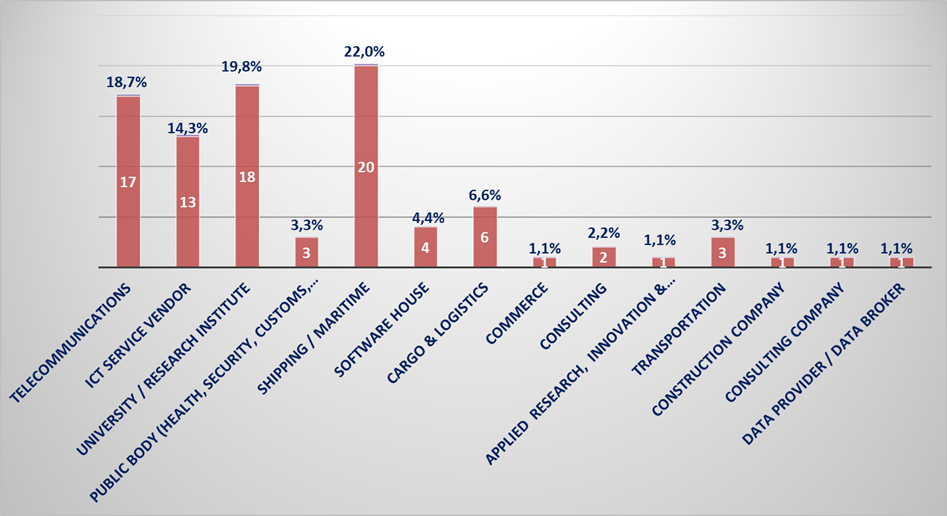
A wide variety of the responses can be depicted. Although the majority 75% of the responses come mainly from Shipping/maritime, academia, telecommunications and ICT service organizations as it was expected, there is a 25% that comes from other industries, public bodies software houses, network operators, marketing, transportation and consulting enterprises that shows a potential interest of participation at the seaports’ ecosystem and their transformation.
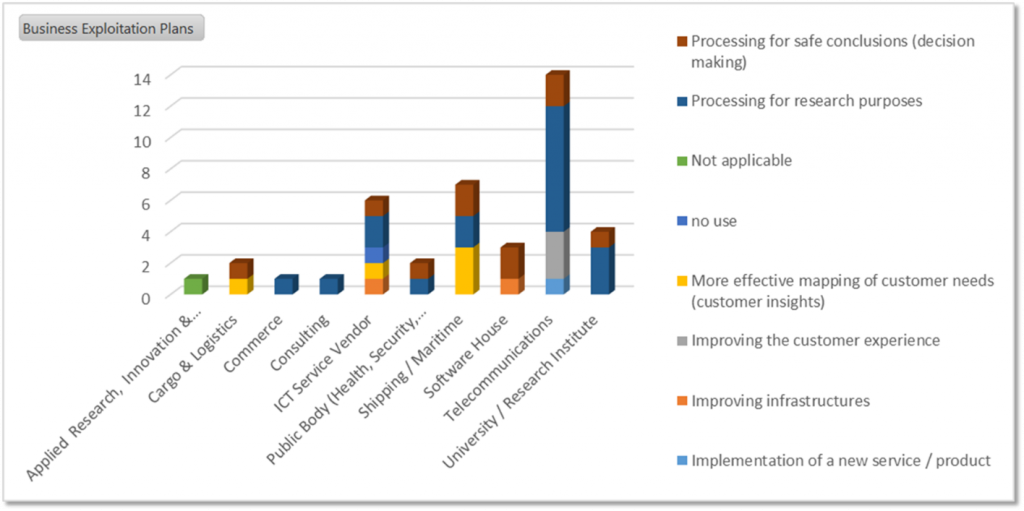
This category was designed to measure the willingness of the responders to take advantage and use a data-sharing platform and adopt it to their business plans. It seems that of highly importance among the answers were the consuming data for safe business conclusions, improving their customers’ experience, creating new services based on the insights, and improving their infrastructure. The feedback in most of the cases was measured ranging between 30 and 50 %. The responders were able to make multiple selections where applied.
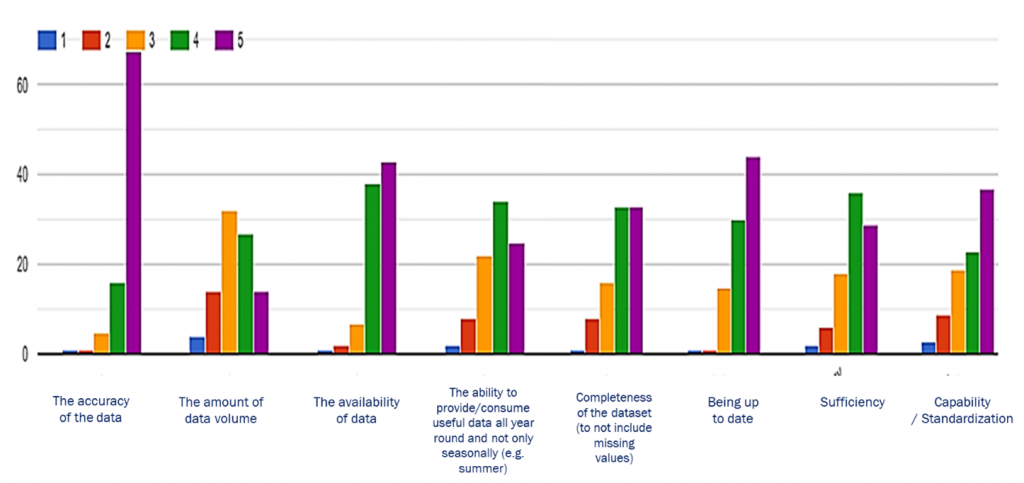
This category was designed to assist on the identification of the important attributes when using data, as well as to rate several data / service sharing aspects. In this Figure, is portrayed that the accuracy of the data is of a very importance since 75% of the answers reported, the data availability was measured as important at 42% and as, very important at 47% of the responses. Moreover, the data compatibility was measured as important at 25%, and as very important at 41%. Data being up to date was important at 43% of the responders and important at 48%.
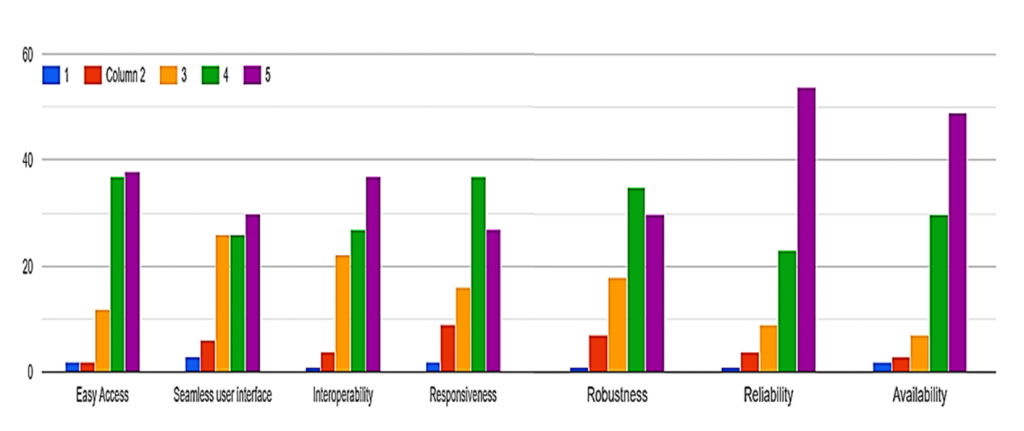
Specific parameters such as, the availability, the reliability, the interoperability, and the easy access were considered as very important data/service sharing parameters compared with the seamless user interface the robustness and the responsiveness, that were also important ones but with lower priorities.
The survey was intended to identify the needs for data and service sharing in the seaports’ ecosystem in order to validate the necessity for a data drive platform and at the same time to highlight the important parameters that should be taken into account by DataPorts for the implementation of the platform. It is observed from the analysis that there are several industries that could be highly involved in the seaports’ transformation through the offering of data and services, some others are willing to explore to an extend and measure the benefits before being more actively engaged and there are some organizations were their delay in digital transformation is either causing an unwillingness to be on-board or creating some skepticism.
You can find here the complete results of the Survey #1.
